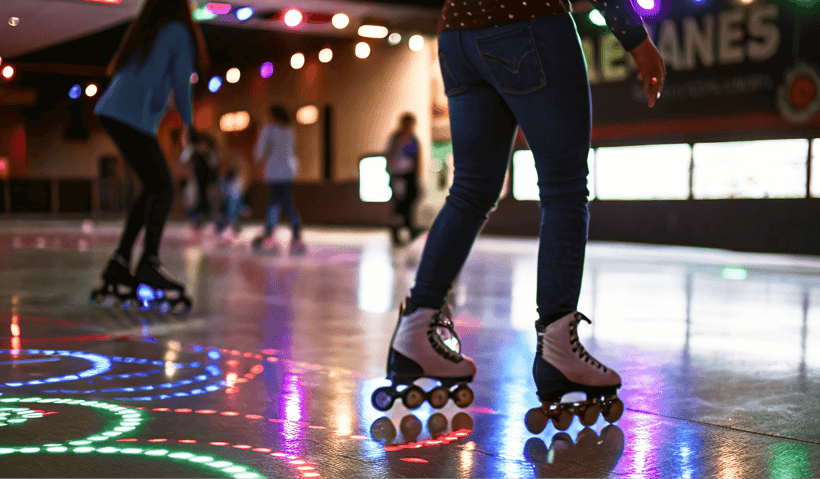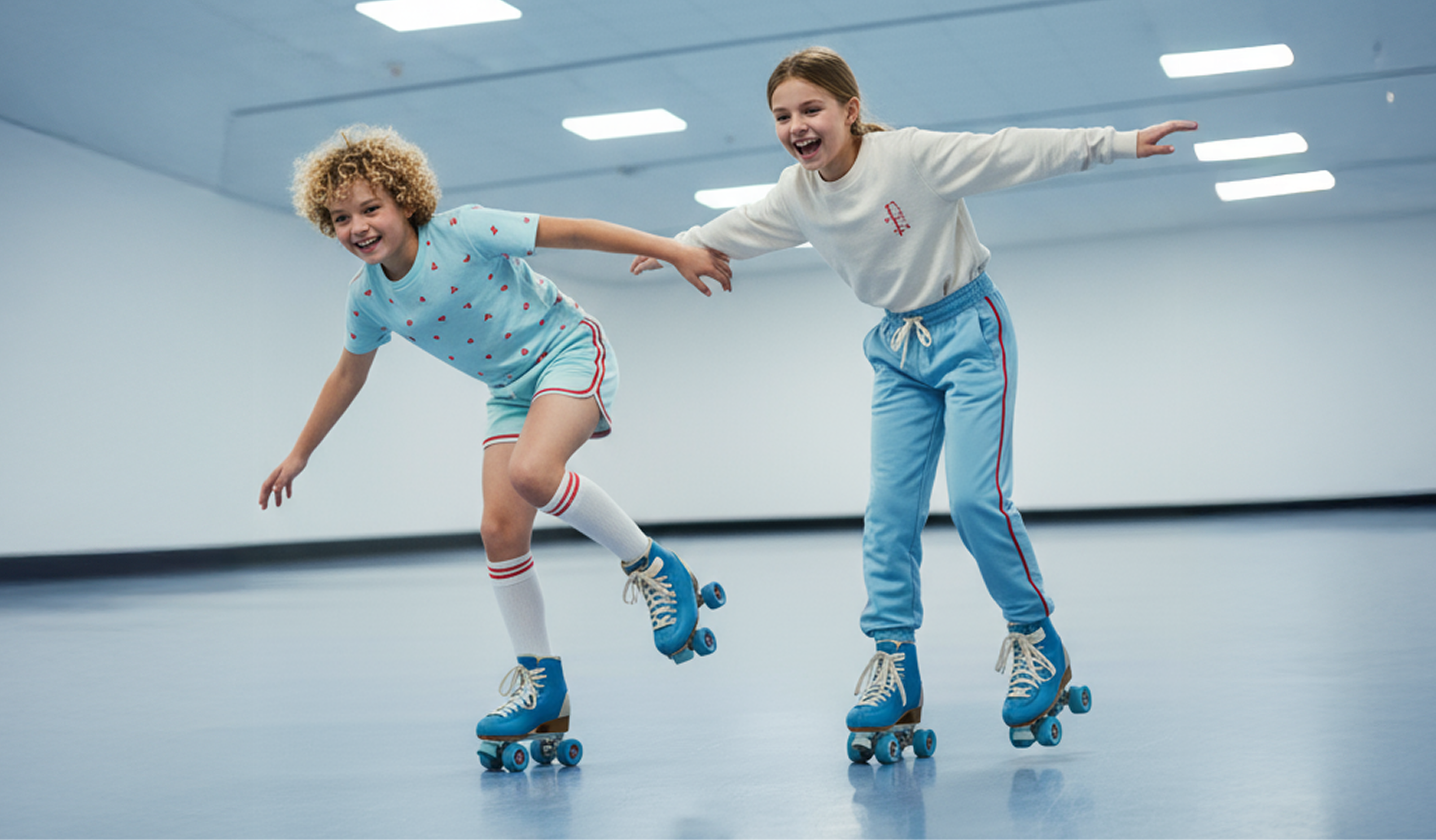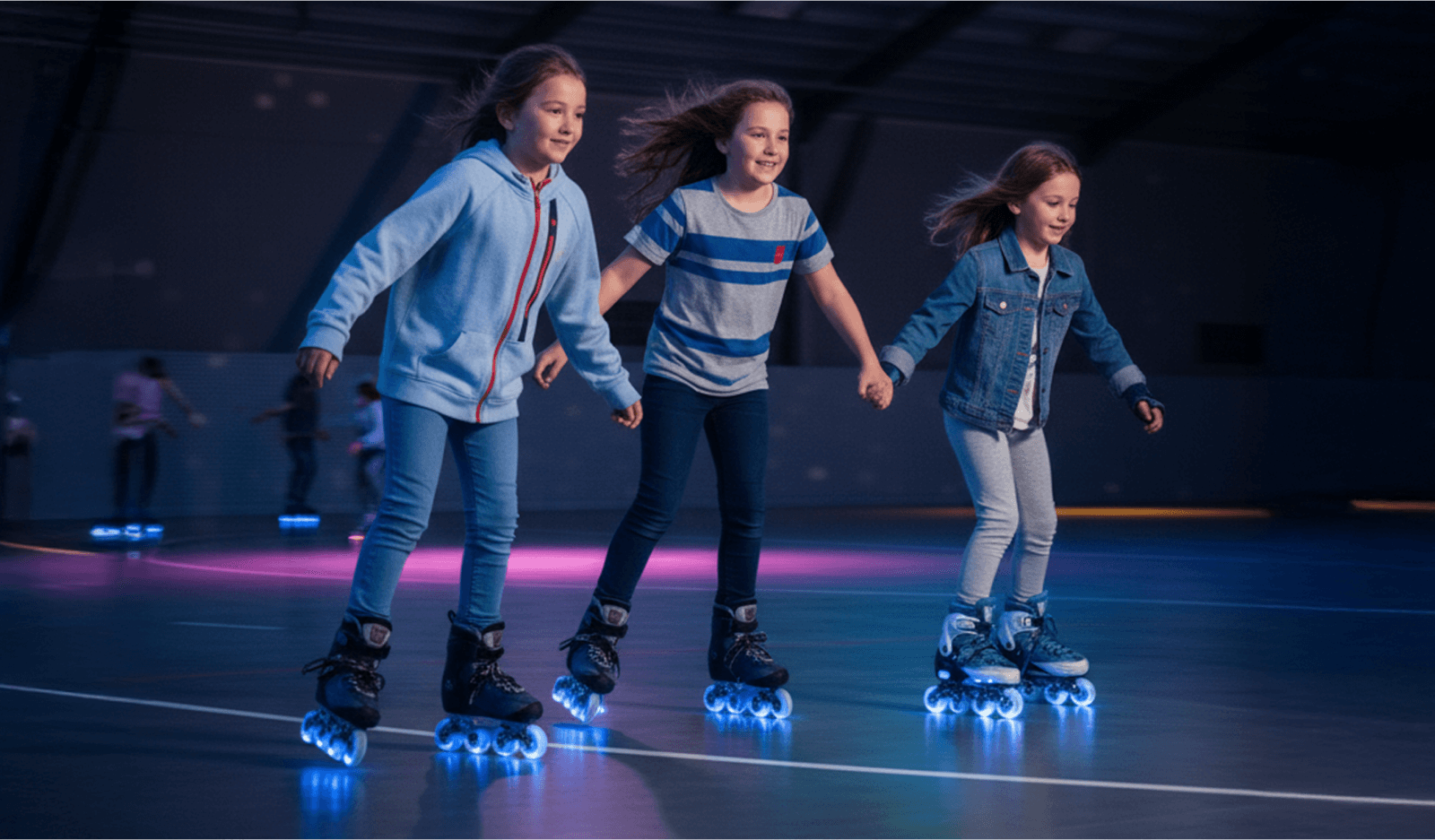How Much Does It Cost to Build a Roller Skating Rink?

Dreaming about starting a roller skating rink so you can create a community hub and give guests a place to make lasting memories? Whether you’re a lifelong skater, a first-time entrepreneur, or a seasoned investor, understanding the startup costs is key to building a successful rink.
In this guide, we’ll walk you through everything you need to know, from floor installation and equipment costs to permits, staffing, and hidden fees, so you can plan with confidence and avoid surprises.
What factors affect skating rink startup costs?
The total cost to build a roller skating rink will vary significantly depending on your business’s needs. From property expenses and renovation requirements to staffing and permits, there are plenty of things that can influence your skating rink startup costs. Knowing what to expect can help you budget more effectively.
Location, location, location
Location has one of the biggest impacts on the overall cost of establishing a roller rink. Commercial real estate costs in urban areas are typically more expensive due to higher demand and competition. Rural locations can be of great value, but smaller populations generally mean fewer skaters. That’s why it’s worth researching your market and balancing your income potential with what you’ll spend to get started.
You’ll also need to consider the pros and cons of buying versus leasing your space. Buying gives you long-term control and asset value but comes with a much higher upfront investment. Leasing is more affordable at first, but you’ll have less flexibility if the property changes hands or your needs evolve.
Another big decision is whether you’ll build from scratch or renovate an existing space. Starting from the ground up is usually the most expensive route. A more cost-effective option may be to upgrade a former skating rink or repurpose a space that already has suitable infrastructure.
Finally, think about rink size and guest capacity. A larger space will naturally cost more to lease, purchase, and fit out, but if demand is strong, the added capacity could lead to higher revenue. Balancing your ideal guest experience with what’s financially sustainable is key.
How much space do you need for a roller skating rink?
While the world’s largest indoor roller skating rink, Guptill’s Arena, has a skating area of 21,000 square feet, you don’t need record-breaking square footage to run a successful skating rink.
Most commercial skating rinks operate with a space of around 15,000 square feet, or 125 feet by 125 feet for a round skating area. This is plenty of space for guests to skate comfortably and maintain a safe distance from others, even during busy periods and group events like birthday parties.
In addition to the main skating surface, you’ll need space for essential guest areas, including:
- Reception and point-of-sale stations
- Seating and spectator areas
- Party or function rooms
- Concession stands or cafés
- Restrooms and staff facilities
- Storage lockers for guests’ belongings
Ample parking is also important, especially if you're located in a suburban area. If you’re in a more urban area, proximity to public transportation can also help drive foot traffic.
So, depending on your desired rink size and long-term plans, you should aim for a property with 15,000–30,000 square feet to accommodate your new roller skating business.
Cost breakdown
Building a roller skating rink requires careful planning and a clear understanding of the costs involved. Most operators spend $500,000–$1.5 million to open a rink, depending on factors like size, location, and whether you’re building from scratch or renovating an existing space.
We know that seeing numbers in the millions can feel daunting. But it’s important to remember that this is an investment in a long-term, high-potential business, and there are ways to scale your plans to fit your budget. By breaking the costs down into clear categories, you can make informed decisions, avoid surprises, and focus on creating a venue that delivers an unforgettable guest experience from day one.
To help you prepare, we’ve broken down the typical startup and ongoing operational expenses you can expect when launching your rink. These estimates (in USD) are based on average ranges for a 15,000 square foot rink and will vary depending on location, venue size, and business model.
|
Category |
Cost |
|
Property purchase |
$400,000–$3,000,000 |
|
Property lease |
$50,000–$250,000 per year |
|
Hardwood floor installation |
$150,000–$315,000 |
|
Synthetic floor installation |
$90,000–$255,000 |
|
Concrete floor installation |
$90,000–$315,000 |
|
Modular tile floor installation |
$15,000–$45,000 |
|
Renovation and fitout |
$350,000–$3,000,000 |
|
Lighting and sound |
$95,000–$700,000 |
|
Rental skates |
$75-250 per pair |
|
Helmets and protective equipment |
$30-150 per helmet |
|
Permits, licenses and insurance |
Varies by location; be sure to check the specific regulations in your area |
|
Booking and POS software |
Varies depending on provider, features, and whether you choose multiple systems or an all-in-one platform |
Sources:
- https://realmo.com
- https://gymfloors.com/blog/new-gym-floor-installation-cost/
- https://www.totalfitouts.com.au/blog/demystifying-commercial-fit-out-costs-in-australia-a-comprehensive-guide/
- https://sportsvenuecalculator.com/knowledge/led-sports-lighting/hockey-rink-lights/
Overlooked and hidden costs
Some operating expenses may not appear in your initial startup budget, but they can add up quickly once your rink is running. These often-overlooked costs are essential to factor into your long-term financial plan:
- Facility maintenance and repairs: Roller skating is a high-impact activity, and that means there’s going to be some wear and tear on your equipment. From scuffed rink floors to broken light fixtures and carpet stains, plan for routine maintenance to keep your rink safe, functional, and inviting.
- Cleaning services and supplies: Cleanliness is critical for guest satisfaction. Make sure you factor in the cost of a regular cleaner to look after everything from cleaning the bathrooms to sweeping the rink itself. You’ll also need to ensure you have the right cleaning equipment for the required tasks. It’s worth budgeting for a regular cleaner to handle everything from the bathrooms to the rink floor, and maybe extra help during busy weekends.
- Staff onboarding and turnover costs: Hiring and training new staff can be costly. While it’s always more efficient to retain great team members, plan for occasional turnover, plus the time, tools, and budget required to onboard new hires effectively.
- Utilities: Utility costs like electricity, water, and internet can be significant, especially for larger facilities. Depending on your lease, some may be included, but make sure to clarify this in advance and estimate what’s not covered.
- Software subscriptions: Beyond your POS system, you’ll need tools for online ticketing, memberships, food and beverage ordering, analytics and reporting, guest feedback, and waivers. All-in-one software, like ROLLER, combines these into a single platform to boost revenue and simplify operations.
- Payment processing and chargeback fees: You’ll also want to account for payment processing and the occasional chargeback if a customer disputes a transaction. With ROLLER Payments, operators see fewer chargebacks thanks to smart dunning and proactive fraud prevention, meaning less lost revenue from involuntary churn and disputed transactions.
- Replacement of worn-out skates or gear: Any skates or protective gear you offer for customers to hire will suffer wear and tear and require ongoing maintenance. You can minimise this by offering simpler, sturdier hire skates that are less likely to need replacement, but it’s still a cost you will have to wear.
- Marketing: Once your roller skating rink is up and running, you’re going to need to promote it. There are no hard and fast rules here, but a common strategy is to invest between 5%-15% of your revenue on marketing.
How to save costs with smarter planning
Starting a roller skating rink business is a big investment, but there are several things you can do to more easily manage those costs as you get started.
One way to keep costs down is to start small and grow as demand builds. Reinvesting your profit into additional revenue streams, like arcade machines or new attractions, can help facilitate more growth over time.
You also might want to consider ways to lower the property costs up front. You could rent space in a shared venue to get started, or find ways to repurpose existing buildings to try to lower the building costs. Second-hand gear can be a big money-saver, especially if you find lightly used skates or sound equipment.
Automating manual processes with digital waivers and self-service kiosks is another good way to reduce the labour costs of running your roller skating rink.
If you know you have a customer base ready to go, you could also try leveraging pre-sales or memberships before launch to help drive initial funding.
Next steps
Starting your roller skating business is just like strapping on skates for the first time: fast, thrilling, and full of momentum. And with the right planning, it doesn't have to be a bumpy ride!
ROLLER is designed to help make it easier to run your business. With ROLLER’s skating rink software, you can manage bookings, membership programs, digital waivers, payments, and guest feedback all in one place.
Book a demo today to see how ROLLER can help you launch, manage, and grow your skating rink.
Frequently asked questions about roller skating rink costs
How much does it cost to build a roller skating rink?
What are the biggest costs of opening a skating rink?
Can I open a skating rink with less than $500K?
What hidden costs should I prepare for when opening a skating rink?
How do software tools help reduce costs?
Disclaimer: This article is not intended as legal advice. Venues should coordinate with the appropriate bodies for specific information about regulations and guidelines.
Related articles


Roller Rink Safety: How to Keep Guests Safe and Reduce Risks

Enhance your guest experience
Get free education, tips and inspiration to help you run a successful venue.